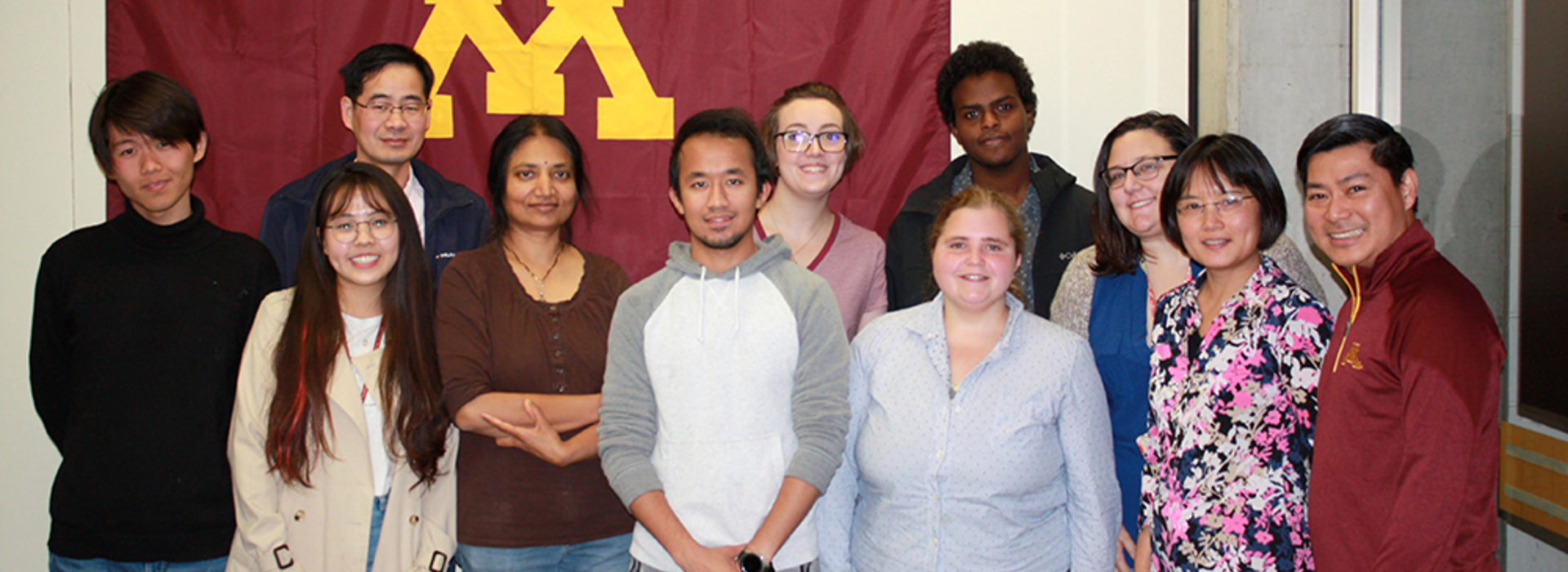
Doctoral Candidate Helping to Develop a COVID-19 Vaccine
While many scientists are unable to continue their work during this era of uncertainty and precaution, there are select research teams at the University of Minnesota that are still in their labs and on a mission to find not just one but multiple cures for COVID-19.
“The process has been interesting and unlike anything my predecessors have seen before,” said Morgan Brisse, a PhD candidate in the Department of Biochemistry, Molecular Biology and Biophysics shared between the U of M Medical School and College of Biological Sciences.
As one of the researchers working on two rapid-approved grants for COVID-19, Brisse works under the direction of principal investigators (PI), Hinh Ly, MA, PhD, and Yuying Liang, MS, PhD, both professors in the College of Veterinary Medicine, to develop and test a COVID-19 vaccine using the U of M’s patented vaccine platform and the ELISA antibody test.
“The grants for our COVID-19 studies were quite literally approved overnight,” Brisse said. “Our PIs assigned our roles very quickly, shifted the normal lab schedules and staggered them to avoid overlapping hours. We’ve increased communication and streamlined our work to be as safe and efficient as possible.”
Brisse works in the lab to collect blood samples from mice, using them as control and specimen samples to test for antibody production.
“These two projects we received grants for link together,” Brisse said. “We needed to sample antibody production first, then develop the antibody tests. After completing these studies first, we’ve been able to employ our mouse work in COVID-19 vaccination research.”
In hopes of one day going back to a more normal way of life, it is crucially important to develop vaccines that can help establish what researchers call “sterilizing immunity” and “herd immunity” to COVID-19.
Currently, there are three different kinds of possible vaccination methods known to researchers: a killed virus (a deactivated virus), a live-attenuated virus (live, but with decreased replication rates and side effects) and a recombinant virus (using a different, non-threatening virus with a synthetically encoded protein). Brisse and researchers are currently working on a recombinant virus vaccine using the Pichinde virus to express a COVID-spike protein. However, she notes that it is important to develop multiple vaccines for different people.
“Researchers as a whole are working to develop a variety of vaccine options for different populations. For example, when it comes to children or the elderly, a live-attenuated vaccine may not be good for them, so it will be important for us to make more sensible options for their consideration,” Brisse said. “Having multiple vaccines will also be helpful when it comes to supply chain logistics and manufacturing capacity.”
Brisse says that she has been grateful to contribute research to try to curb the rate of this pandemic while many labs have not been able to continue their work.
“Our PIs and postdocs have really led these efforts while assigning our work based on our strengths as graduate students and planning our schedules effectively,” Brisse said. “I certainly have a newfound appreciation for being in the lab and for everyone I work with.”